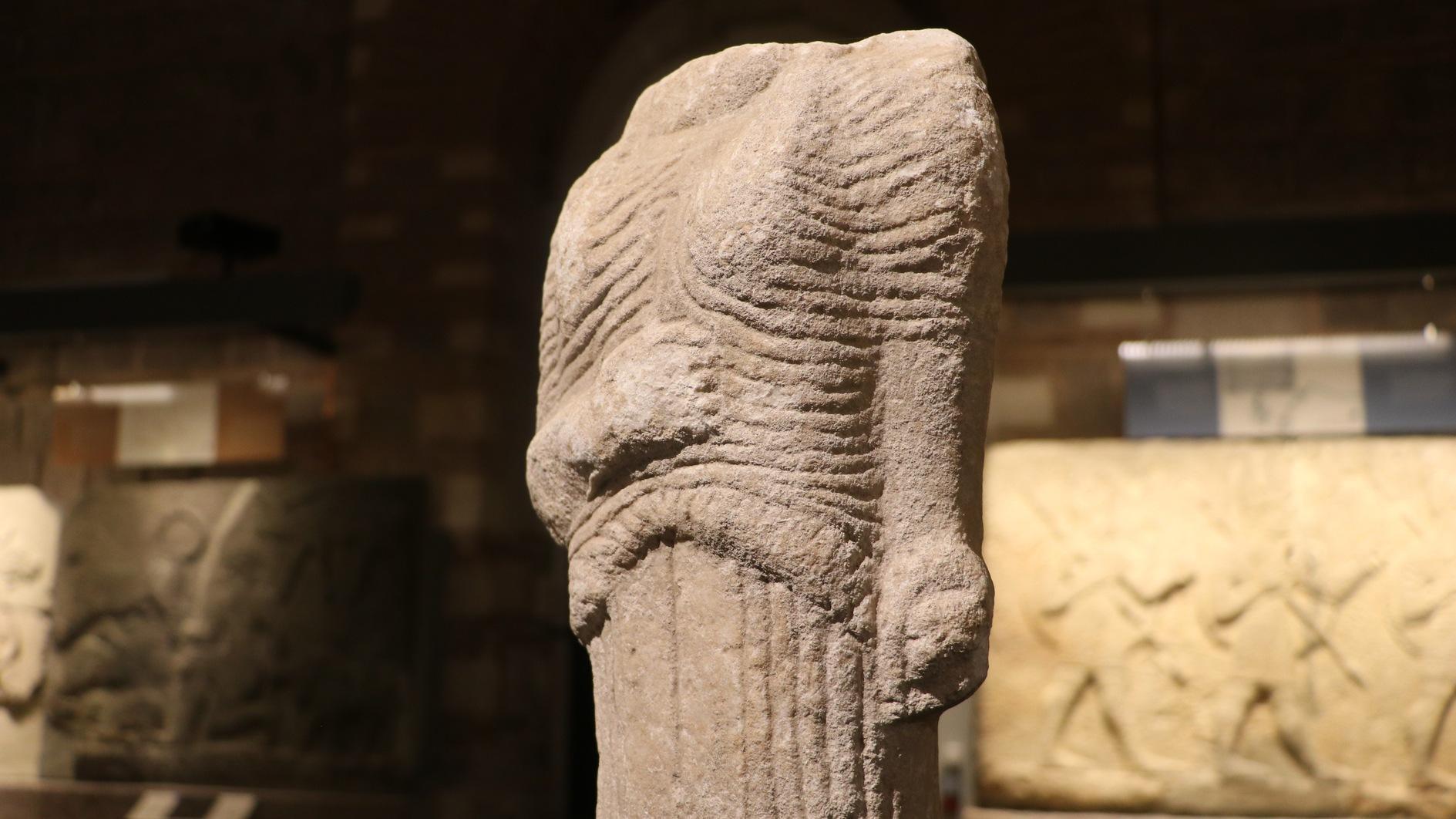
A "Kore torso" — a statue body without the head and arms — that was auctioned in the U.K. and returned to Türkiye after being proven smuggled from the ancient city of Miletus in the western province of Aydın’s Didim district, will soon be exhibited at the Museum of Anatolian Civilizations in Ankara.
Experts of Culture and Tourism Ministry’s Anti-Smuggling Department suspected that the marble Kore torso might be of Anatolian origin after it was offered for sale with lot number 65 in the catalog published for the “Antiquities” auction of Christie's Auction House in London on Dec. 8, 2021.
Thanks to the ministry’s initiatives, the sale of the sculpture was suspended, and evidence and documents were obtained indicating that it was illegally taken out of Türkiye. Then the archive documents that would determine the origin of the artwork were presented to the British authorities.
Didim Chief Public Prosecutor's Office launched an investigation into the matter and requested the return of the artwork. Finally, the torso was returned to Türkiye in January this year.
Preparations for the exhibition of the artifact have been recently completed at the Museum of Ankara Anatolian Civilizations. It will be opened to visitors in the museum soon.
Zeynep Boz, head of the Department of Combating Smuggling at the Culture and Tourism Ministry's Directorate of Cultural Heritage and Museums, said that Kore is the name of Persephone in Greek Mythology and means virgin, and explained the process of the return of the artifact.
She said that when the work was offered for sale in 2021, they noticed the name of a collector known for smuggling and they followed up on the issue.
“This name gave us a direct opinion. Later, thanks to the archive documents, the suspicious names and our access to scientific data proving that the work was of Anatolian origin, Turkish Foreign Affairs Ministry made contacts with the London Embassy through an investigation initiated by the Didim Chief Public Prosecutor's Office. We brought the work to our country. It was a proud moment for all of us. Because while receiving the work, we were also very happy to hear from our British colleagues or British authorities how effective we are in the fight against cultural property smuggling in our country,” Boz said.
Boz also drew attention to the importance of the work, saying, “This type of female sculptures are called ‘kore’ and their male counterparts are called ‘kouros’ in the 6th century B.C. Their significance lies in the fact that they are the first examples of plastic art products. Plastic arts is actually the sculptures produced in three dimensions. We have very special examples of these especially in Didim. First of all, this is a cultural asset that has been displaced and taken from the heart of its country. It is very important to get it back by presenting its criminological data because it was smuggled. As you know, it is possible to think that some archaeological objects become rarer as they age over the years. They are less protected today but it is also important for us that this piece is in good condition.”
Works for display completed
Yusuf Kıraç, the director of the Museum of Anatolian Civilizations, stated that the collection was enriched by the work's arrival at the museum.
“These artworks are shown to the scientific community via scientific articles. In recent years, we have seen that people come to museums to see artworks that have been smuggled abroad, and that they show more interest in such works. This makes us happy,” he added.
He said that the artifacts that are brought to the museum are scientifically reported and it is decided in which section they will be exhibited. This is a work from the Hellenistic era. It is listed with other works and it gets an inventory number. Then, the artwork remains with this name for life. Now, we have completed that work and will put the torso on display for visitors to see it.”